Thimphu, the vibrant capital of Bhutan, offers a blend of tradition and modernity, making it a must-visit destination in the Himalayas. As Bhutan’s cultural and political heart, Thimphu is rich in history, spirituality, and scenic beauty. Visitors can explore ancient monasteries, experience Bhutanese culture through its museums, or simply enjoy the serene landscapes that surround the city. The things to do in Thimphu range from spiritual journeys to cultural explorations, ensuring that every traveller finds something to cherish. Here’s a guide to the top experiences that await you in Thimphu.
Top 10 Things To Do In Thimphu
Here are the top 10 things to do in Thimphu that will make your visit memorable:
1. Visit The Tashichho Dzong
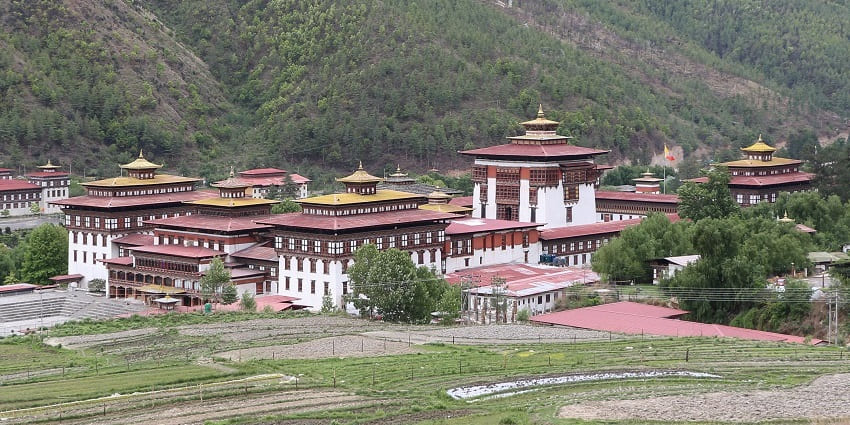
Photo: Bernard Gagnon / Wikimedia Commons
Tashichho Dzong, also known as the “Fortress of the Glorious Religion,” is a magnificent structure that serves as the seat of the Bhutanese government and the summer residence of Je Khenpo, the Chief Abbot of Bhutan. It is one of the best things to see in Thimphu. The dzong is a fine example of traditional Bhutanese architecture with towering white walls, golden spires, and intricate woodwork. The serene courtyards and temples within the dzong are perfect for reflection and insight into Bhutan’s rich spiritual heritage.
Ideal Duration: 1 – 2 hours
Entry Fee: BTN 300 / ₹2250 for foreigners
Timings: 9 AM – 5 PM
Suggested Read: Places To Visit In Thimphu
2. Explore The National Memorial Chorten
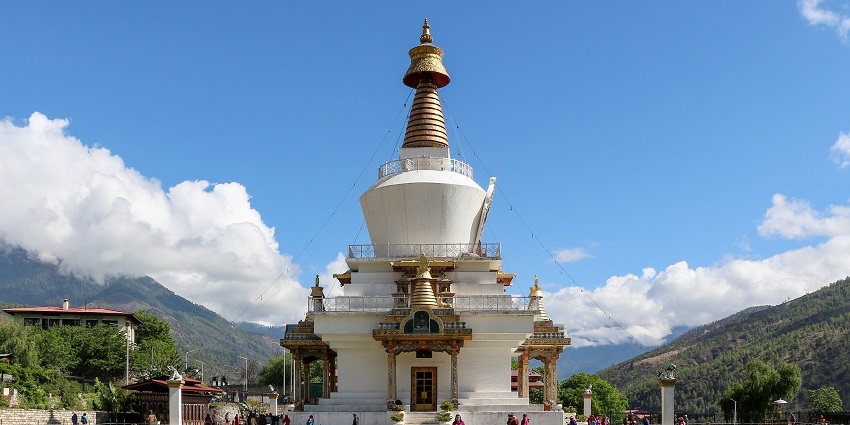
Photo: Bernard Gagnon / Wikimedia Commons
The National Memorial Chorten, a prominent landmark in Thimphu, was constructed in 1974 to honour the memory of Bhutan’s third King, Jigme Dorji Wangchuck. This whitewashed stupa, adorned with golden spires and intricate paintings, is a focal point for daily worship and prayer. Locals and visitors walk clockwise around the chorten, spinning the prayer wheels and offering prayers. The chorten symbolises peace and prosperity in Bhutan and provides a peaceful atmosphere for reflection.
Ideal Duration: 30 minutes to 1 hour
Entry Fee: BTN 300 / ₹2250 for foreigners
Timings: 6 AM – 6 PM
3. Buddha Dordenma Statue
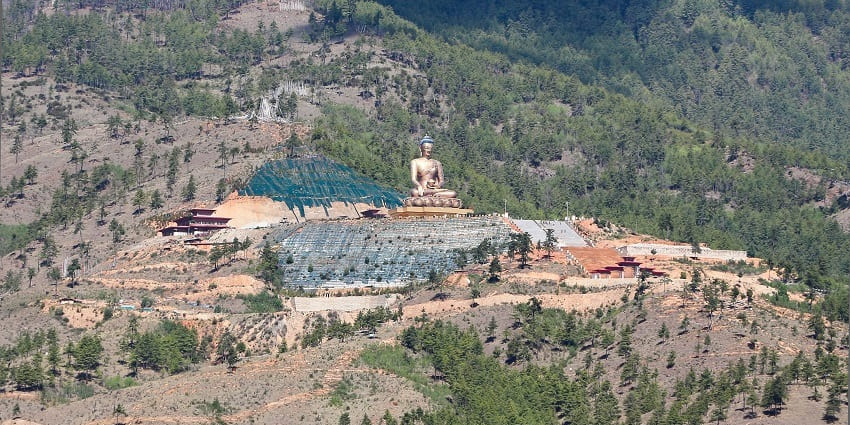
Photo: Bernard Gagnon / Wikimedia Commons
The Buddha Dordenma Statue is one of the largest Buddha statues in the world, standing 54 metres high and overlooking the southern entrance of Thimphu Valley. The hike to the statue offers stunning views of the city and surrounding mountains, making it a popular activity for locals and tourists. Inside the statue are thousands of smaller Buddha statues, the best thing to see in Thimphu, creating a serene and spiritual environment. The site is lovely during sunrise and sunset when the statue is bathed in golden light.
Ideal Duration: 1 – 2 hours
Entry Fee: No specific entry fee
Timings: 7 AM – 5 PM
Suggested Read: Peaceful Places To Visit Near Thimphu That Reflect Bhutan’s Culture
4. Folk Heritage Museum
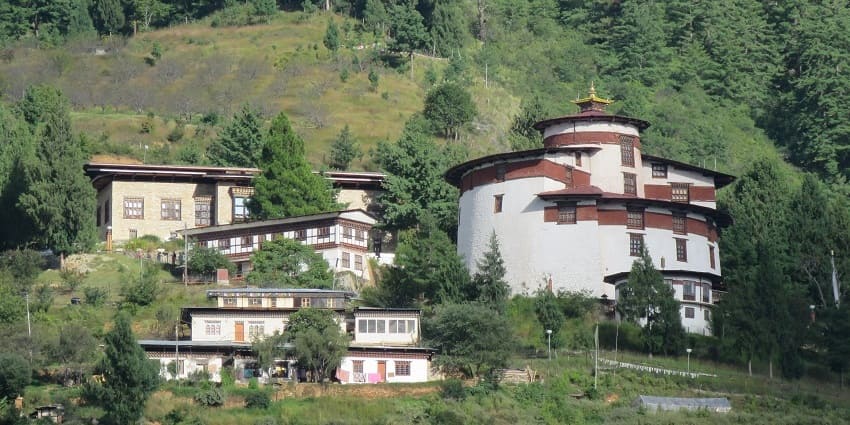
Photo: Vinayaraj / Wikimedia Commons / Image For Representation Only
The Folk Heritage Museum, also known as Phelchey Toenkhyim, offers a glimpse into Bhutanese rural life. The museum is housed in a traditional Bhutanese farmhouse, showcasing artefacts, tools, and household items that depict the daily life of Bhutanese villagers in the past. Visitors can explore the museum’s exhibits, which include farming equipment, traditional cooking utensils, and handmade crafts. The museum also features a traditional Bhutanese kitchen and an outdoor garden where traditional crops are grown.
Ideal Duration: 1 – 1.5 hours
Entry Fee: BTN 200 / ₹1500 for foreigners
Timings: 10 AM – 4:30 PM
5. Textile Museum
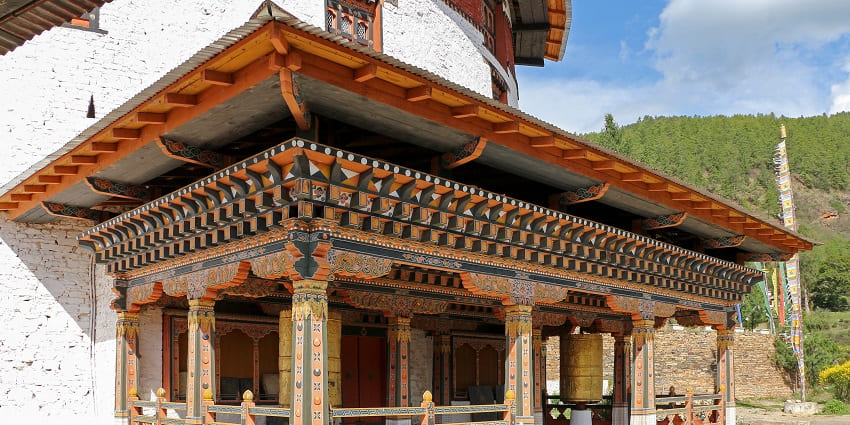
Photo: Bernard Gagnon / Wikimedia Commons / Image For Representation Only
The Textile Museum in Thimphu is committed to preserving and showcasing Bhutan’s vibrant textile traditions. The museum showcases an impressive collection of traditional Bhutanese textiles, including handwoven fabrics, intricate embroidery, and royal garments. Visitors can learn about the different weaving techniques used in various regions of Bhutan and the cultural significance of these textiles. The museum also offers live weaving demonstrations, providing a deeper understanding of this important Bhutanese craft.
Ideal Duration: 1 – 1.5 hours
Entry Fee: BTN 150 / ₹1125 for foreigners
Timings: 9 AM – 4 PM
Suggested Read: National Museum Of Bhutan
6. Centenary Farmers’ Market
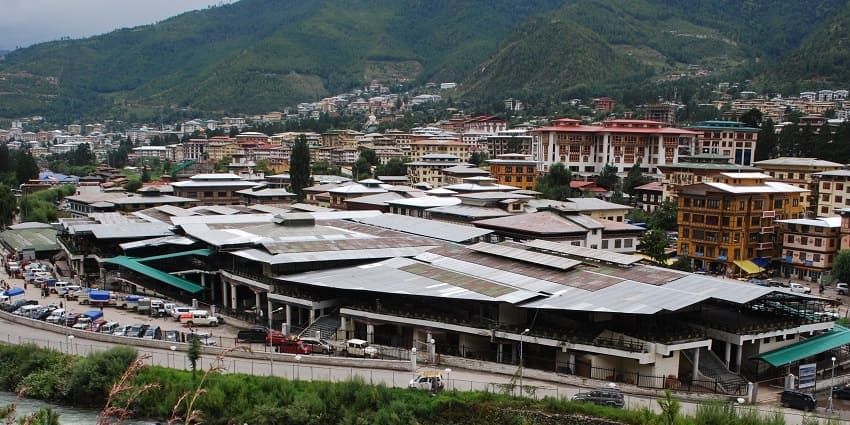
Photo: Prabina Karki / Wikimedia Commons / Image For Representation Only
The Centenary Farmers’ Market is Bhutan’s largest market, offering a vibrant mix of fresh produce, local handicrafts, and traditional Bhutanese food products. It is one of the best things to see in Thimphu, and the market is a great place to experience Bhutanese culture and taste local delicacies. Visitors can stroll through the market stalls, sampling dried fruits, homemade cheese, and Bhutanese chilli peppers, or purchase handwoven textiles and souvenirs. The market is busiest on weekends, providing a lively atmosphere for locals and tourists.
Ideal Duration: 1 – 2 hours
Entry Fee: Free
Timings: 9 AM – 5 PM,
7. Changangkha Lhakhang
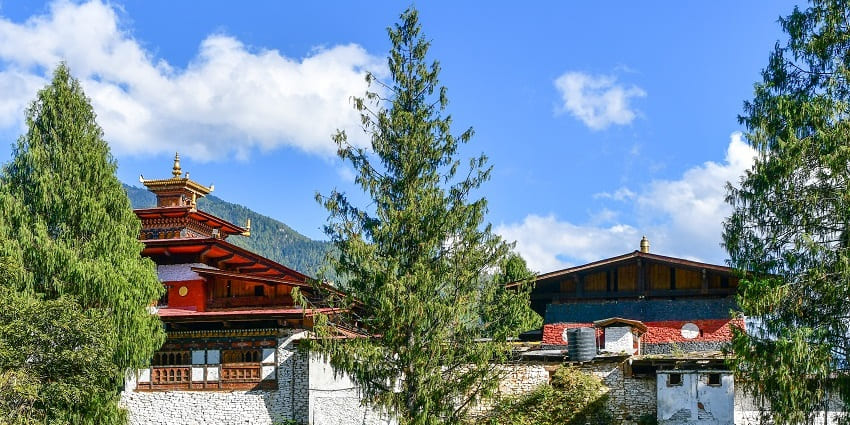
Photo: Christopher J. Fynn / Wikimedia Commons
Changangkha Lhakhang is one of the oldest temples in Thimphu, founded in the 12th century. Perched on a ridge above Thimphu, the temple is dedicated to Avalokiteshvara, the Buddha of Compassion. The temple is a popular place to visit in Thimphu for parents to bring their newborns for blessings and is known for its beautiful prayer wheels and intricate murals. The view from the temple offers a panoramic vista of the Thimphu Valley, making it a peaceful spot for contemplation and prayer.
Ideal Duration: 30 minutes to 1 hour
Entry Fee: free
Timings: 8 AM – 6 PM
Suggested Read: Cheri Monastery Thimphu
8. National Institute For Zorig Chusum
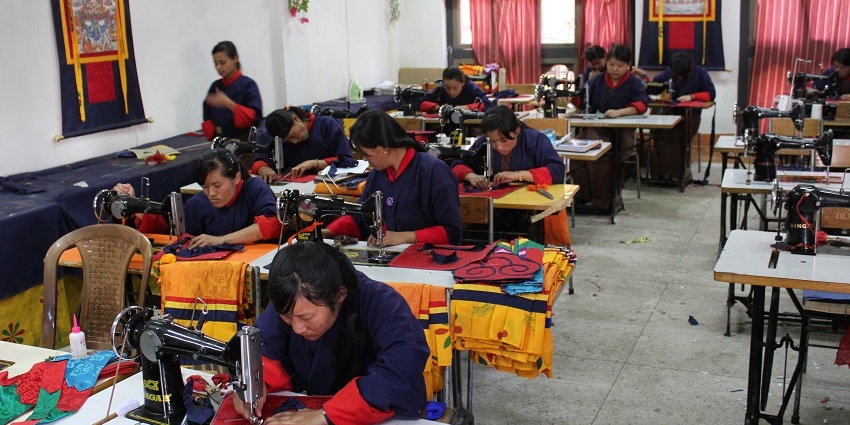
Photo: Arian Zwegers / Wikimedia Commons / Image For Representation Only
The National Institute for Zorig Chusum, commonly known as the School of Arts and Crafts, is where students learn Bhutan’s traditional arts, known as the “thirteen crafts” or Zorig Chusum. Visitors can tour the classrooms and watch students practise various crafts, including painting, woodcarving, embroidery, and sculpture. The institute plays a crucial role in preserving Bhutanese culture by training the next generation of artisans. The school’s gallery also offers traditional crafts for sale, making it a great place to purchase authentic Bhutanese art.
Ideal Duration: 1 – 1.5 hours
Entry Fee: BTN 100 / ₹750 for foreigners
Timings: 9 AM – 5 PM
9. Explore The Royal Takin Preserve
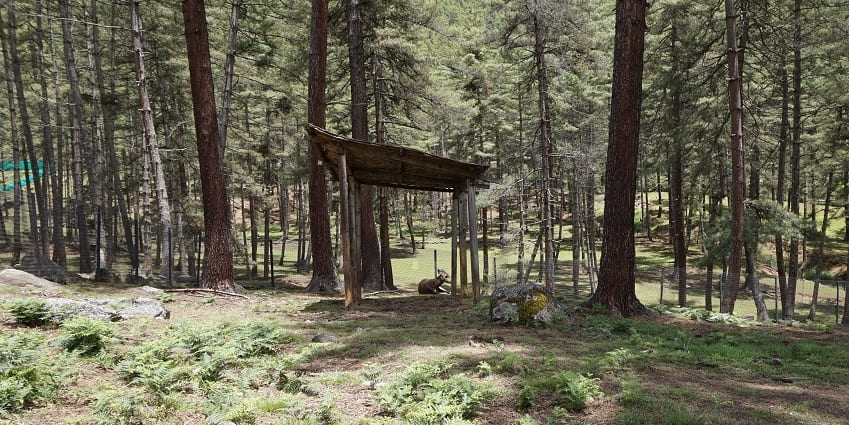
Photo: Bernard Gagnon / Wikimedia Commons
The Royal Takin Preserve is home to Bhutan’s national animal, the takin, a unique creature that looks like a cross between a goat and a cow. Legend has it that the famous Bhutanese saint Drukpa Kunley, created the takin. The preserve, located on the outskirts of Thimphu, offers visitors the opportunity to see these rare animals up close in their natural habitat. Lush forests surround the preserve, offering a peaceful retreat from the bustling city.
Ideal Duration: 1 hour
Entry Fee: BTN 100 / ₹750 for foreigners
Timings: 9 AM – 5 PM
Suggested Read: Discover The Top Things To Do In Bhutan
10. Simtokha Dzong
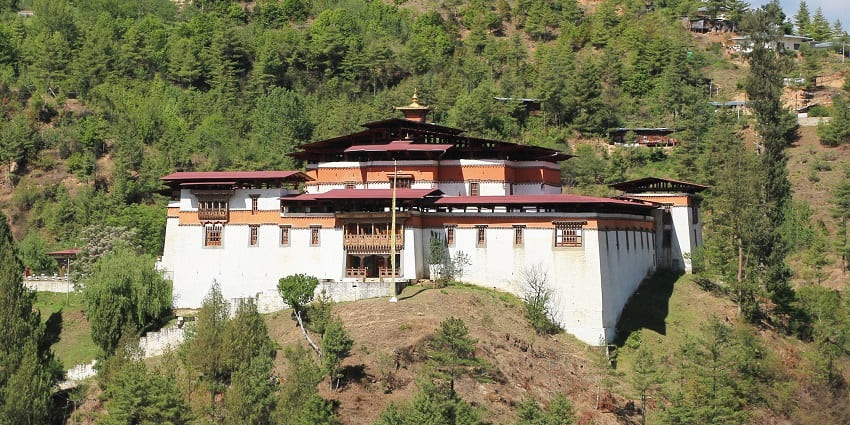
Photo: Bernard Gagnon / Wikimedia Commons
Simtokha Dzong, also known as the Sangak Zabdhon Phodrang (Palace of the Profound Meaning of Secret Mantras), is the oldest dzong in Bhutan, built in 1629 by Zhabdrung Ngawang Namgyal. The dzong now houses a monastic school where young monks study Dzongkha, the national language of Bhutan, and Buddhist teachings. The dzong’s architecture blends religious and military styles, and its interior is adorned with beautiful murals and carvings. Simtokha Dzong offers a glimpse into Bhutan’s history and spiritual life, making it an essential stop for visitors to Thimphu.
Ideal Duration: 1 hour
Entry Fee: BTN 300 / ₹2250 for foreigners
Timings: 9 AM – 5 PM
The things to do in Thimphu offer a captivating blend of cultural exploration, spiritual experiences, and natural beauty. Whether you’re seeking cultural immersion, spiritual reflection, or simply enjoying Bhutan’s scenic landscapes, Thimphu has something to offer. To make your trip seamless, consider booking your accommodations and activities through TripXL, ensuring an unforgettable journey through Bhutan’s charming capital city.
Cover Photo: Gerd Eichmann / Wikimedia Commons


 WhatsApp
WhatsApp
 Twitter
Twitter









